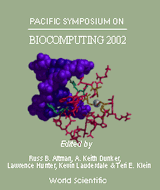Glycosylation of proteins: a computer based method for the rapid exploration of conformational space of N-glycans
Bohne A, von der Lieth CW
DKFZ (German Cancer Research Centre), Molecular Modelling, INF 280, 69120 Heidelberg, Germany. a.bohne@dkfz.de
Pac Symp Biocomput. 2002;:285-96.

Abstract
Inspection of protein databases suggests that as many as 70% of proteins have potential N-glycosylation sites. Unfortunately glycoproteins often refuse to crystallize and NMR techniques do not allow an unambiguous determination of the complete conformation of the sugar part. Therefore, time-consuming complex simulation methods are often used to explore the conformational space of N-glycans. The generation of a comprehensive data base describing the conformational space of larger fragments of N-glycans taking into account the effects of branching is presented. High-temperature molecular dynamics simulations of essential N-glycan fragments are performed until conformational equilibrium has been reached. Free energy landscapes are calculated for each glycosidic linkage. All possible conformations for each N-glycan fragment are automatically assigned, ranked according to their relative population and stored in a database. These values are recalled for the generation of a complete set of all possible conformations for a given N-glycan topology. The constructed conformations are ranked according to their energy content. Since this approach allows to explore the complete conformational space of a given N-glycan within a few minutes of CPU-time on a standard PC, it is well suited to be used as a Web-Based application.
[Full-Text PDF] [PSB Home Page]